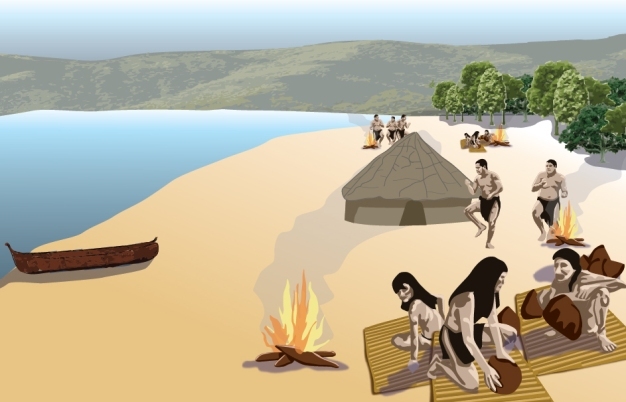Later Stone Age (LSA) / Upper Paleolithic (UP) technologies.
Keywords
Flag Inappropriate
Delete Content

Later Stone Age (LSA) / Upper Paleolithic (UP) technologies.
The LSA/UP reflects a dramatic elaboration of material culture. Building upon technological origins that extend deep into the MSA, toolmakers begin to emphasize the production and use of prismatic blades (mode 4) and geometric microliths (mode 5), two technologies that employ fairly sophisticated prepared core techniques. The former yields a series of elongated cutting edges; the latter returns, in effect, a number of disposable razors. Either could be embedded along the working edge of a spear, harpoon, or knife. The LSA/UP also witnesses a notable increase in non-lithic material culture. Animal bones are, for the first time, routinely utilized as a key raw material in artifact design and manufacture: often coupled with new tool forms/technologies such as fish hooks, harpoon tips, and tiny sewing needles. LSA/UP toolmakers also leave behind some of the earliest unambiguous evidence of symbolic thought and ritualized behaviors: cave paintings, bone flutes, carved figurines, and necklaces made of shells, bones, and teeth. Collectively, LSA/UP technologies reflect the emergence of modern-like capacities to retain and modify useful innovations on a truly large scale. They also document an increased reliance on cultural adaptations. Starting much earlier, but really gathering momentum in the LSA/UP, hominins begin to routinely adapt to complex challenges through real-time shifts in technology and culture (e.g., by inventing spear-throwers or sewn clothing) rather than largely relying on significantly longer-term changes in, say, anatomy (e.g., by evolving slightly longer arms, hairier bodies). This trend toward a greater reliance on cultural solutions increases dramatically through time.
This image is linked to the following Scitable pages:
Why study Paleolithic technology? What can old stone tools, ancient fire pits, and painted cave walls tell us about our evolutionary past?





















Comments
CloseComments
Please Post Your Comment